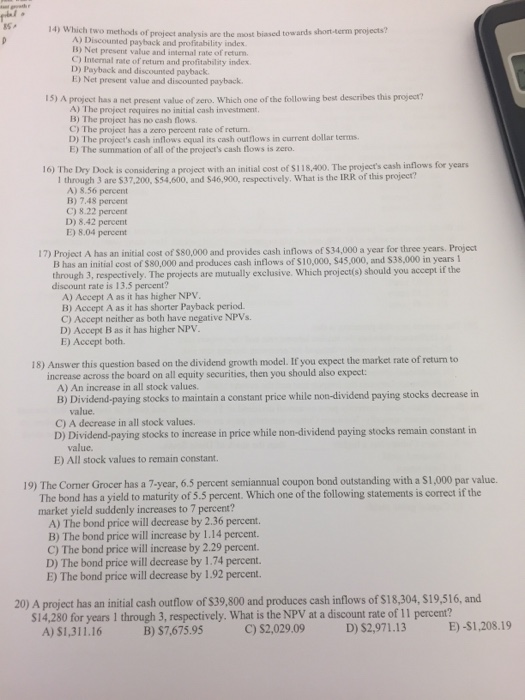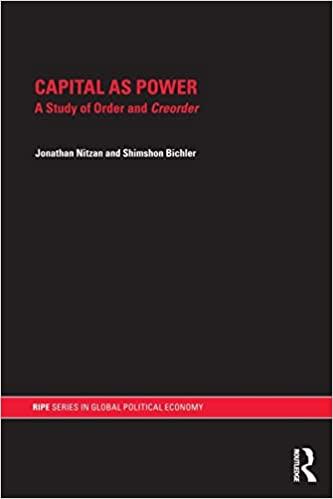Which two methods of project analysis are the most biased towards short-term projects? A) Discounted payback and profitability index B) Not present value and internal rate of return. C) Internal rate of return and profitability index D) Payback and discounted payback. E) Net present value and discounted payback. A project has a net present value of zero. Which one of the following best describes this project/A) The project requires no initial cash investment. B) The project has no cash flows. C) The project has a zero percent rate of return D) The project's cash inflows equal its cash outflows in current dollar terms. E) The summation of all of the project's cash flows is zero. The Dry Dock is considering a project with an initial cost of $118,400. The project's cash inflows for years 1 through 3 are $37,200, $54,600, and $46,900, respectively. What is the IRR of this project? A) 8.56 percent B) 7.48 percent C) 8.22 percent D) 8.42 percent E) 8.04 percent Project A has an initial cost of $80,000 and produces cash inflows of $10,000, $45,000, and $38,000 in years 1 through 3, respectively. The projects are mutually exclusive. Which project(s) should you accept if the discount rate is 13.5 percent? A) Accept A as it has higher NPV. B) Accept A as it has shorter Payback period. C) Accept neither as both have negative NPVs. D) Accept B as it has higher NPV. E) Accept both. Answer this question based on the dividend growth model. If you expect the market rate of return to increase across the board on all equity securities, then you should also expect. A) An increase in all stock values. B) Dividend paying stocks to maintain a constant price while non-dividend paying stocks decrease in value. C) A decrease in all stock values. D) Dividend paying stocks to increase in price while non-dividend paying stocks remain constant in value. E) All stock values to remain constant. The Corner grocer has a 7-years, 6.5 percent semiannual coupon bond outstanding with a $1,000 par value. The bond has a yield to maturity of 5.5 percent. Which one of the following statements is correct if the market yield suddenly increase to 7 percent? A) The bond price will decrease by 2.36 percent. B) The bond price will increase by 1.14 percent. C) The bond price will increase by 2.29 percent D) The bond price will decrease by 1.74 percent E) The bond price will decrease by 1.92 percent. A project has an initial cash outflow of $39,800 and produces cash inflows of $18,304, $19,516, and $14,280 for years 1 through 3, respectively. What is the NPV at a discount rate of 11 percent? A) $1,311.16 B) $7,675.95 C) $2,971.13 E) -$1,208.19







